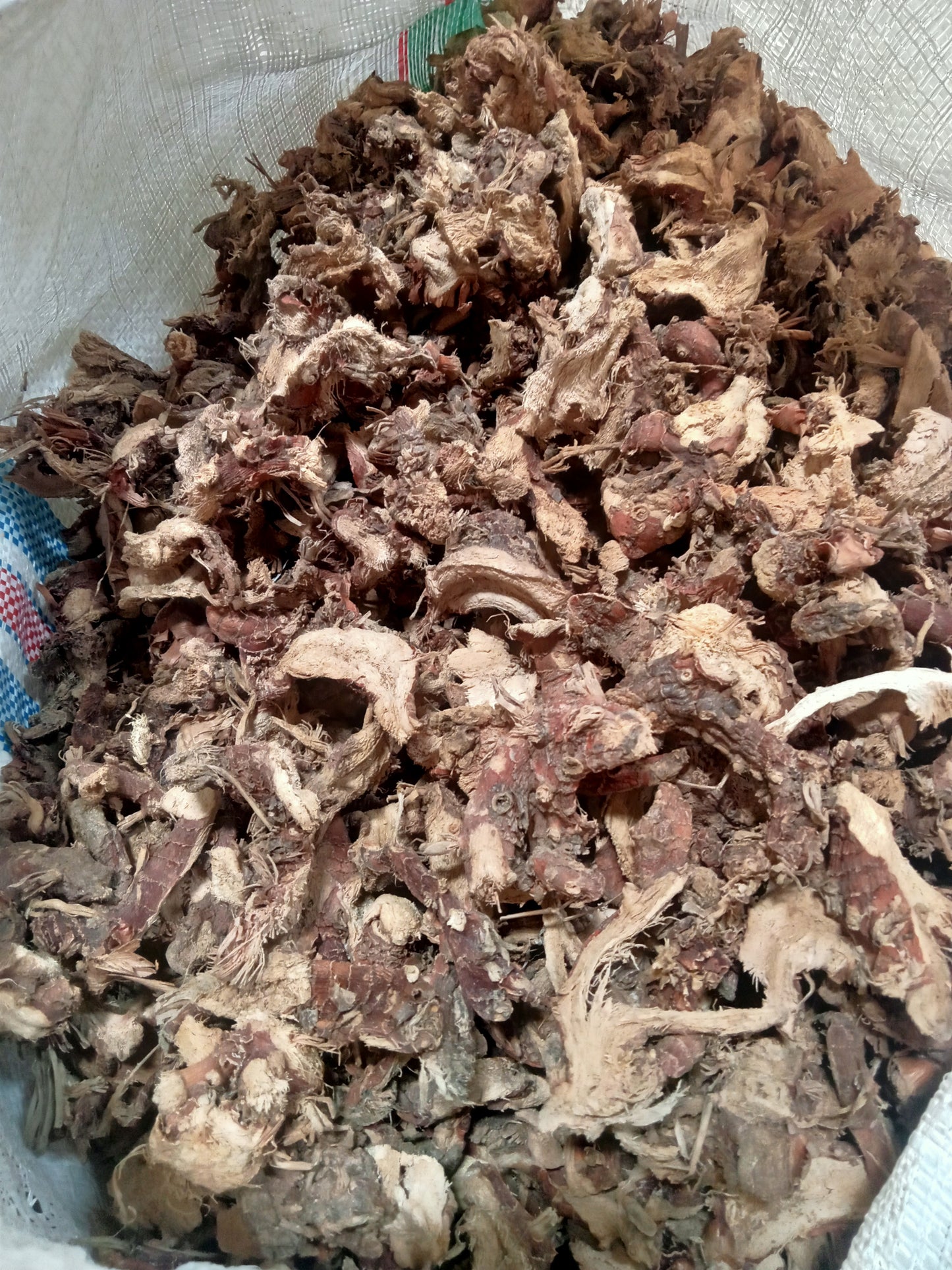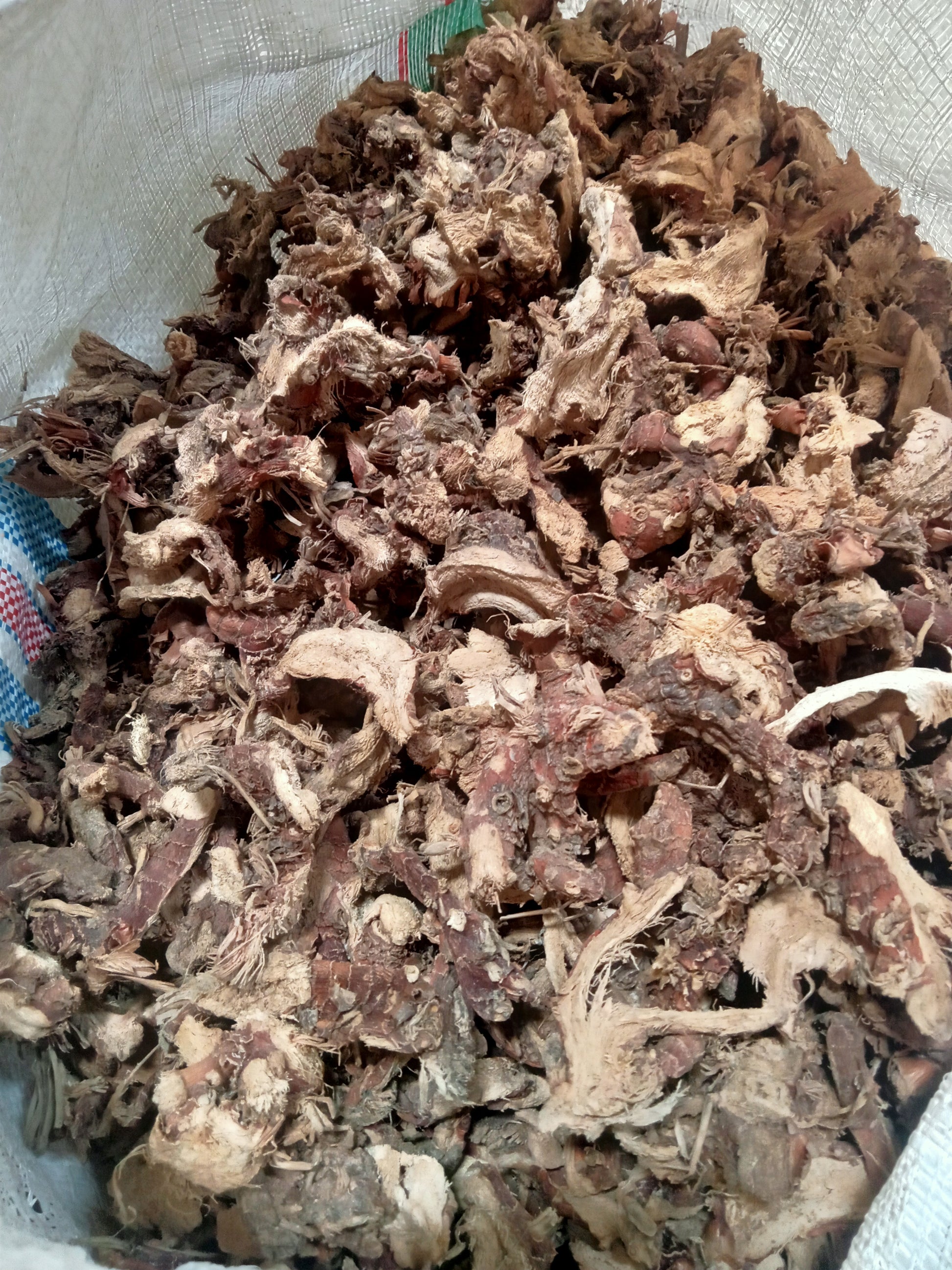starlaboratories.id
Dried galangal
Dried galangal
Dried galangal refers to the root of the galangal plant, which is closely related to ginger but has a distinct flavor profile. There are two main types of galangal used in cooking:
1. Greater galangal (Alpinia galanga) – This is the more commonly used variety in Southeast Asian cuisine, especially in Thai and Indonesian cooking.
2. Lesser galangal (Alpinia officinarum) – This variety has a sharper, more pungent flavor and is often used in Chinese and some traditional medicinal applications.
When dried, galangal takes on a woody, earthy texture with a slightly reddish-brown hue. It is often sold in thin slices or chunks. The drying process concentrates its flavor, making it even more aromatic and intense than its fresh form.
Characteristics of Dried Galangal:
* Color: Ranges from light tan to brownish-red, depending on the variety and how it's dried.
* Texture: Hard, tough, and fibrous. The dried slices or chunks are often too tough to use directly in dishes and need to be grated, ground, or soaked before use.
* Aroma: Strong, aromatic, and somewhat peppery with citrus and earthy notes. It’s a combination of ginger’s heat and a hint of pine and eucalyptus.
* Flavor: Spicy, slightly bitter, and tangy, with a more complex profile than ginger, and less sweet.
Culinary Uses:
* Broths & Soups: Dried galangal is often used in soups like *tom yum* (a Thai hot and sour soup), where it adds depth and a subtle heat.
* Curries & Stir-fries: It’s a key ingredient in many Southeast Asian curry pastes, especially in Thai, Malaysian, and Indonesian cuisine.
* Spice Blends: Often found in spice mixes like *rendang* (Indonesian beef curry) or *panang curry* (a rich Thai curry).
* Infusions: It can be added to broths, teas, or even cocktails to give a unique spiciness and complexity.
Medicinal Uses:
Dried galangal is also used in traditional medicine for its potential health benefits, including:
* Digestive aid: It’s thought to help with digestion, nausea, and bloating.
* Anti-inflammatory: Galangal has compounds that may help with inflammation and joint pain.
* Respiratory health: It's sometimes used to clear sinuses or as a remedy for colds.
How to Use Dried Galangal:
* Soak in Water: If you’re using dried galangal in a recipe, it’s best to soak it in warm water for about 15–30 minutes to soften it before adding it to dishes.
* Grind into Powder: You can also grind dried galangal into a fine powder using a spice grinder, which makes it easier to incorporate into curry pastes or spice mixes.
If you’re thinking of using dried galangal, it’s definitely worth getting familiar with its bold and unique flavor! Let me know if you want any recipes or tips on how to incorporate it into your cooking.

Image with text
Pair text with an image to focus on your chosen product, collection, or blog post. Add details on availability, style, or even provide a review.






